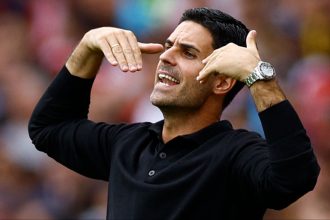Despite Vettori’s best efforts, his side fell to the bottom of the table in 2008
Brydon Coverdale29-Dec-2008
Me against the world: Vettori had to play one-man army for far too long in 2008 © AFP
The consensus when John Bracewell stood down this month after fiveyears as New Zealand’s coach was that he had only done half the job.They had established themselves as a consistently threatening one-dayside during his reign, but in the Test arena their poor results hadbecome as predictable as Chris Martin’s batting. Never was thatfrustrating split more apparent than in Bracewell’s last year at thehelm.New Zealand’s Test schedule had been light in recent seasons; theyplayed only ten Tests in 2006 and 2007 combined. In 2008 they played14 Tests and won four but three of those victories came againstBangladesh. The most revealing moment came when they lost to Australiain Adelaide and slipped to eighth on the ICC’s Test rankings -effectively last, as only Bangladesh were below them.In the limited-overs format they thrived, with 10 wins from 15 ODIs.They didn’t lose a series, beating England at home and away andexpectedly triumphing against Ireland, Scotland and Bangladesh. Thenew coach, Andy Moles, faces the task of developing a team that canperform in both versions. At least he has some of the building blocks.After a year of change in 2007, when they lost Nathan Astle, CraigMcMillan and Hamish Marshall to the ICL, there were a couple of evenmore important departures in 2008. Within the first few weeks of theyear, Shane Bond had headed for the ICL and his New Zealand career wasover. Stephen Fleming also retired after the home series againstEngland, although his exit was as inevitable as the prime minister,Helen Clark, losing office.Jesse Ryder, Daniel Flynn, Tim Southee and Tim McIntosh all debutedand showed promise. Iain O’Brien went from a battling trundler to theworld’s No. 11 wicket-taker for the year. He also turned into a highlyentertaining blogger. Ross Taylor consolidated his reputation with thefirst two centuries of his Test career.But for all the potential that their emerging men displayed, far toomuch was left up to the new captain Daniel Vettori. That he was theirleading Test wicket-taker by a considerable margin was not surprising- he collected 54 at 26.12 – but that he was third on their battingList with 672 runs at 35.36 was a sad reflection of their top-orderwoes.The incessant chopping and changing with the opening roles continued.Craig Cumming and Matthew Bell began as the first-choice pair, Belland Jamie How were tried, then How and Aaron Redmond, and finally Howand McIntosh. And now How is struggling, so who knows how long thecurrent combination will last. It has created instability for themiddle order – hardly ideal with young batsmen trying to find theirfeet at Nos. 3, 4 and 5. Flynn, Taylor and Ryder could provide NewZealand with a firm batting core in the future, although 2008 was hitand miss for the trio.When Flynn arrived on the scene during the tour of England, he wouldhave preferred miss than the hit he received. In his second Test, atOld Trafford, he was struck in the face by a James Anderson bouncerand lost a couple of teeth. Flynn walking off the ground with abloodied mouth was one of the enduring images of the year in NewZealand cricket, but the way he returned to perform solidly for theremainder of the year proved the team had found a fighter.The tour of England provided another memorable image whenVettori and Brendon McCullum shouted their disapproval from theplayers’ balcony at The Oval after England’s ODI captain, Paul Collingwood, declined to recall Grant Elliott, who had been run out after colliding with the bowler, Ryan Sidebottom. New Zealand went onto win the series 3-1.At Test level they struggled to match England; they won the first homeTest, in Hamilton, and drew at Lord’s, but lost the other four Tests in the home-and-away tours. They were not helped by the absence of seniormen like Vettori and McCullum for the start of the tour afterthey were given permission to stay longer in the IPL, where McCullum’sincredible 158 in the opening match had set the tone for the tournament.A visit to Bangladesh brought more concerns than it should have; theylost the first ODI and only won the Chittagong Test because Vettoricarried the side with bat and ball. The signs were not good ahead of atour to Australia and the comprehensive 2-0 loss to the No. 1 team was not a major surprise, although Southee continued to show his potential as a dangerous swing bowler after bursting onto the scenewith a five-wicket haul on debut against England in Napier.A more closely-fought home series against West Indies followed, but a 0-0 draw was not the ideal result. It was the first time Moles had been in charge of the side; the coaching role was one of severalmanagement positions that altered during the year. And so a period ofchanges on field and off ended with New Zealand at the bottom of theTest table. The only way is up.New man on the block
Jesse Ryder. Happily for New Zealand there were options in thiscategory. Flynn and Southee in particular could be cornerstones of theline-up for the next few years. Ryder has the potential to be not onlya key player but a cult hero. Unconventionally proportioned for atop-level cricketer, his international career got off to asmashing start in February when he slammed 79 from 62 balls in hissecond ODI, against England in Hamilton, and then it threatened tocrash and burn when he put his fist through a bar-room window inChristchurch after a late night of drinking. He hurt his hand so badlythat he could not make the tour of England, but on his return he showedpromise in Tests against Bangladesh, and West Indies.
The infamous Grant Elliott run-out from the Oval ODI © AFP
Fading star
Stephen Fleming. It was strange that one of the most respectedcaptains of the modern era farewelled the game not leading his sidebut as one of 10 men playing under the new skipper, Vettori.New Zealand fans knew at the start of the year the end was nigh forFleming, although he surprised many by bowing out after the NapierTest against Michael Vaughan’s men instead of kicking on for one lasttour of England. He left the game with scores of 59 and 66 in hisfinal Test and it was somehow appropriate for a man who, for all histalent, should have made more than nine Test centuries, having passed50 on 55 occasions.High point
In Tests there were precious few; three of their four victories cameagainst Bangladesh. Beating England in the first Test at home was thestandout, but it was followed by a pair of defeats. The other highpoint for New Zealand in 2008 was coming back from 1-0 down after twogames to beat England 3-1 in the one-day series in England. That arguably their best achievement came in an inconsequentiallimited-overs series says much about the state of cricket in New Zealand.Low point
Losing to Australia was not unexpected but the consequences of New Zealand’s defeat in the second Test in Adelaide made the outcome particularly disappointing. That game nudged them down the ICC rankings to below West Indies and Martin Crowe thought that was such a galling position to be in that it was quite possibly the country’s worst moment in Test cricket.What 2009 holds
For a team that clearly prefers the coloured clothing, next yearthankfully features a less hectic Test schedule. They host India fortwo Tests in March-April and then head to Sri Lanka for three Tests inAugust. At least expectations will not be high in either series; Indiaare one of the world’s best sides and Sri Lanka at home have beatenIndia, South Africa and England in the past couple of years. A trip toPakistan later in the year may or may not go ahead; the same for theChampions Trophy. The reality is that 2009 will be another developmentyear for an evolving side. It will also start to show whether Molescan simultaneously run two successful sides instead of one, like hispredecessor.






